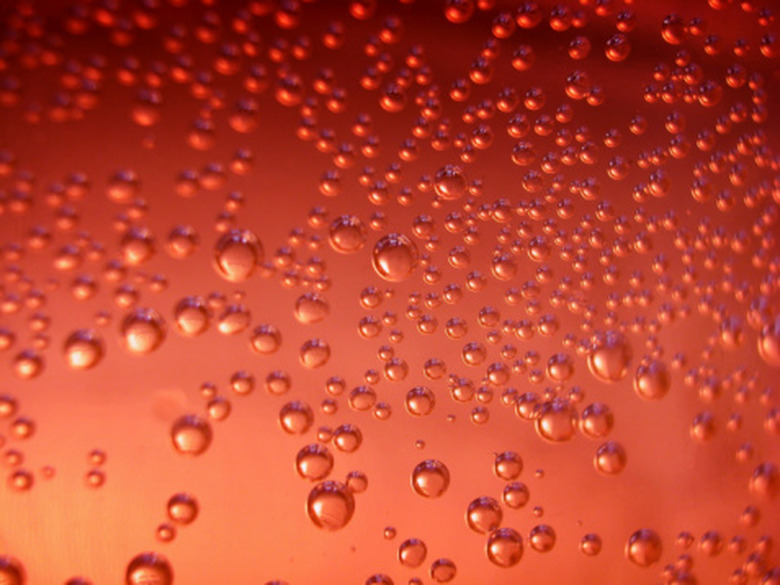Dangers Of Phosphoric Acid
Phosphoric acid, or H3PO4, is a chemical with a widespread variety of applications in both industry and food processing. This acid finds use in the manufacture of fertilizers, waxes, soaps and detergents; it's also added to foods to acidify them or make them more flavorful. In particular, phosphoric acid is the compound that lends soda pop its fresh, sharp flavor. In general, phosphoric acid is not a dangerous chemical, but there are a few precautions you should observe if using it in the lab.
Consumption
Consumption
The U.S. Food and Drug Administration classes phosphoric acid as "generally recognized as safe" (GRAS). In fact, your body actually needs phosphate. Molecules like DNA, RNA and ATP all contain phosphate groups, although the FDA notes that Americans typically obtain more than sufficient amounts of phosphorus from their diet. When used at the concentrations found in soft drinks and foods, there is no reason to think that phosphoric acid would be dangerous to your health.
Acidity
Acidity
One important consideration, however, is the health of your teeth. Your teeth are made from calcium hydroxyapatite, which is more soluble at acidic pH. Bacteria in your mouth ferment sugars and release acids that can decrease the pH and contribute to tooth decay. Sugared sodas not only provide sugar that feeds these bacteria, but they are also acidic. However, orange juice and lemonade are actually more acidic than soda pop
Concentration
Concentration
Making a solution of phosphoric acid more concentrated decreases its pH and make it more acidic. Concentrated phosphoric acid is acidic enough to be dangerous. According to the MSDS, concentrated phosphoric acid is highly corrosive and can cause serious injury if ingested, including severe burns in the mouth and throat. If brought in contact with your eyes, this solution can cause permanent eye damage, and skin contact may cause severe burns.
Reactivity
Reactivity
Mixing phosphoric acid with cyanides, sulfides, fluorides, organic peroxides and halogenated organic compounds can form toxic fumes. These kinds of experiments should be performed under a fume hood for safety. Reacting phosphoric acid with chlorides and stainless steel may release hydrogen gas, which is potentially flammable and explosive. Adding phosphoric acid to nitromethane creates an explosive mixture, and phosphoric acid may also react explosively with sodium borohydride. It should be stored separately from compounds with which it can react violently.
Cite This Article
MLA
Brennan, John. "Dangers Of Phosphoric Acid" sciencing.com, https://www.sciencing.com/dangers-phosphoric-acid-8379692/. 24 April 2017.
APA
Brennan, John. (2017, April 24). Dangers Of Phosphoric Acid. sciencing.com. Retrieved from https://www.sciencing.com/dangers-phosphoric-acid-8379692/
Chicago
Brennan, John. Dangers Of Phosphoric Acid last modified March 24, 2022. https://www.sciencing.com/dangers-phosphoric-acid-8379692/
